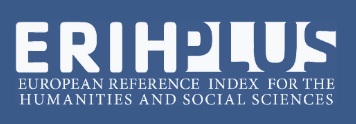Original article
DOI: https://doi.org/10.15507/2076-2577.016.2024.04.417-430
EDN: https://elibrary.ru/lghfsd
УДК / UDC 81’366.58:811.511.131
K. S. Efimov
Udmurt State University, Izhevsk, Russian Federation
Abstract
Introduction. As of today, the grammatical and temporal semantics of the past tense verb forms in the Udmurt language, traditionally designated as “1st past tense” and “2nd past tense”, remain insufficiently studied in academic and scholarly literature. The main difference between these grammatical forms, according to the normative grammars of the Udmurt language, is the presence of an evidential seme in the 2nd past tense. However, information on the nature of the flow of each of the two grammatical tenses, i.e. on the temporal semantics, is missing. The purpose of the research is to identify the meanings expressed by the synthetic forms of the past tense of the Udmurt verb, as well as to specify their similarities and differences.
Materials and Methods. The material for the study consisted of sentences from literary Udmurt texts, extracted from the National Corpus of the Udmurt language. More than 5,000 instances of verb usage in synthetic past tense forms were analyzed. The methodological framework of the study included the methods of continuous sampling, contextual analysis, typological, and descriptive approaches.
Results and Discussion. The paper presents, for the first time, an analysis of two synthetic forms of the past tense verb in the Udmurt language from the perspective of temporal and evidential semantics. The temporal semantics of the forms considered are identical: both can express perfect meanings (statal perfect, actional perfect, past with future meaning) as well as aorist meanings (indifferent past and narrative past). A distinctive feature of the Udmurt preterite is its ability to convey additional temporal meanings when combined with other grammatical categories of the Udmurt verb. Regarding evidential semantics, one form is evidentially neutral, while the other expresses the meaning of indirect evidentiality.
Conclusion. The forms we have examined can be identified as a preterite with fairly broad temporal functionality. From the perspective of evidential semantics, it is confirmed that the key difference between these two verb forms lies in the presence of an evidential seme in one of them. According to grammatical typology, the 1st past tense can be designated as the indicative preterite, while the 2nd past tense can be referred to as the evidential preterite. Further research into these grammatical forms and their inter-categorial relationships will significantly expand our understanding of the Udmurt verb tense system.
Keywords: Udmurt language, grammar of the Udmurt language, verb, past tense, preterite, perfect, aorist, temporality, evidentiality
Conflict of interest: The author declares no conflict of interest.
For citation: Efimov K.S. Typology of Synthetic Forms of the Past Tense of the Verb in the Udmurt Language (Evidentiality and Temporality). Finno-Ugric World. 2024;16(4):417–430. https://doi.org/10.15507/2076-2577.016.2024.04.417-430
Information about the аuthor:
Kirill S. Efimov, Postgraduate Student of the Department of General and Finno-Ugric Linguistics, Udmurt State University (1 University St., Izhevsk 426034, Russian Federation), ORCID: https://orcid.org/0000-0003-2220-2706, SPIN-code: 9550-3913, kirill_udm@vk.com






















